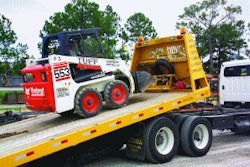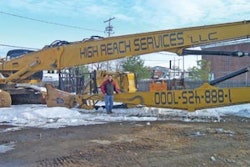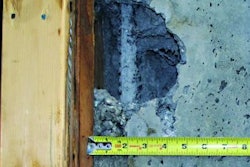
Most small business owners do not understand their cost of labor. Personally, I blame the confusion on our nation's economists who as they are explaining the difference in various nation's ability to compete in the international marker invariably mess it up by comparing wage rates and leaving out productivity factors.
Today's topic came to mind recently while I was working with a contractor helping his team mine through their job costing data. As is typical with new clients, they weren't tracking their job costs correctly. As is common during coaching sessions, the conversations end up crossing multiple topics, and this day we crossed over into the wage rates he paid his workers and the amount of overtime they averaged.
Here's the issue. The easy number to see is the wage rate. It's the number everyone focuses on - not the least of who are your hourly workers. They'll come knocking on your door looking for a 50 cent raise as that is what they believe they can get down the street from your competitor.
Factor in Hours and Productivity
Of course, they overlook a couple of issues. The first and most important is the number of hours of work they receive each year. Always, always, remind them of that. I haven't
seen reliable data in several years; however, the last time I saw it (long before the 2008 recession hit) the typical construction worker put in about 1,500 hours a year.
So let's look at a simple example/lesson to share with your field workers. Let's assume you pay your workers $20 an hour. Which is more attractive, a $1 an hour raise or an
extra 100 hours of work? The raise equates to $1,500. The extra 100 hours equates to $2,000. Of course we have unemployment to factor in for the 100 hours, but you get the
picture. Picking up hours should be the most important priority for hourly workers.
The second issue they overlook is the impact their performance (read: productivity) has on your ability to get them hours; and the more productive they are the more you can
afford to pay them. Highly productive workers are materially worth more than everyone else as their cost of labor is actually lower than everyone else's.
Allow me to demonstrate with a lesson from a rather unusual reference for us: Wall Street. It just so happens that the son of my wife's best friend works for a hedge fund on the Street. Prior to joining the hedge fund, he worked for a large Wall Street bank. I've know this boy since he was 7 years old. He was always a high achiever. Straight A's.
Student council president, etc.
His first year out of college, he and everyone he came in with at the bank went to work at 7:00 a.m. and came home at 10:00 p.m., seven days a week! He literally had 14 days away from work the entire year. His second year wasn't quite as tough. On Sunday they only worked until 4:00 p.m. or so, and he probably got 21 days off. It wasn't just him. It was his entire class of new employees.
When he moved on to the hedge fund after his second year at the bank, his hours grew more reasonable. He more or less has Sunday's off and rarely has to pull any more
all-nighters. This is one of the main reasons the analysts on Wall Street make the money they do...each one literally performs the work of three people (that and because the cost of living in NYC is insane).
Yes, I know you work similar hours. You're the owner. It's the price you pay for getting to work for yourself and potentially making a boat load of money. However, your
workers don't realize the same thing applies to them. The faster they work, the more productive they are, the lower your labor costs will be, the greater will be the
opportunity to land work, the more hours you'll be able to give them, and the more likely you will be able to pay them a higher hourly wage.
The cost of labor boils down to the amount of work they produce. This is where the understanding breaks down. It is easy to grasp that faster workers cost less. The
challenge is translating that concept into concrete, actionable numbers. Numbers that are translated into labor cost per square foot (or whatever unit is applicable for your trade) for different crews.
Everyone has A, B, and C crews. Few monitor the difference in production and translate it into unitary labor costs. When you do you might be surprised to discover that crew B which is made of younger, slightly lower wage workers actually is lower cost than crew A which is faster yet higher priced. Or the reverse may be true. The numbers will reveal all.
My parting point is: always know your numbers. Track your costs and productivity correctly. Adjust your estimating factors, scheduling, and wage rates accordingly. Understand your TRUE cost of labor (the same applies to your front office staff).
Footnote: The above explains why it's usually best to hire A+ workers and pay them accordingly. Never try to go cheap with highly productive workers. There just isn't that many of them out there, and trying to go cheap on them will cost you far more than you will ever realize.


















